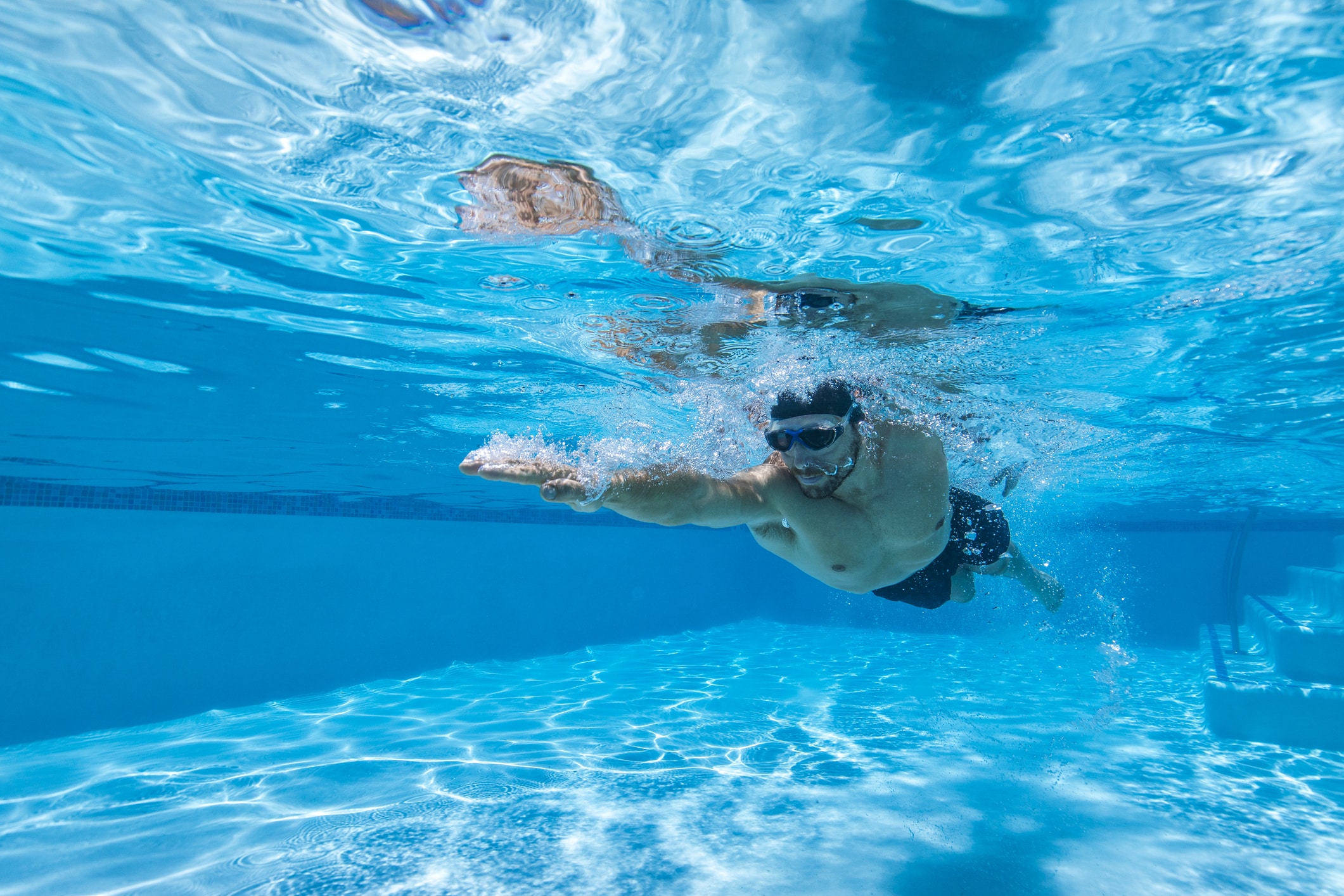
Are you more of a counter-current swimmer or a bungee swimmer?
It’s decided, you are going to transform your pool into a sports pool! You have heard about counter-current swimming and swim elastic but don’t know which solution to choose. Both systems allow you to swim without limits and to train in all swimming styles without any hindrance! So, which one should you prioritize?
How does counter-current swimming work? What is the principle of a swim elastic? What are their advantages and disadvantages? These are all questions you may have, and we answer them here to help you see things more clearly and make the right decision.
Breaking it down.
What is counter-current swimming?
As the name suggests, counter-current swimming is a system that allows you to swim against a current. The key benefit? Swim without limits, whether you prefer breaststroke, freestyle, backstroke, or butterfly!
To learn more, read our guide on counter-current swimming.
Different models depending on the type of pool
You already have a pool. It could be in-ground, tubular above-ground, wooden above-ground, or semi-inground. Each type of pool has its own counter-current swimming solution.
Outboard models
Specifically designed for existing pools, outboard models have the advantage of requiring no major work or drilling of the liner, the pool wall. These turbines simply attach to the edge of the pool and are connected to a power unit via an electric cable hidden in the ground. This is the case for the SWIMEO S model.
Built-in models
If your sports pool project is part of a larger pool construction project, it’s best to opt for a built-in counter-current swimming model.
This model integrates into the pool during its construction and fits into a niche designed for this purpose, covered with a grate. Invisible, this type of model blends subtly into the decor. If your project involves building a pool, choose the SWIMEO X model.
What is a swim elastic?
The swim elastic is equipment that allows you to swim in place, against the resistance of the elastic itself. With it, just like with the turbine, it is no longer necessary to swim back and forth in the pool.
Also read: NCC or swim lane?
A functional product
The swim elastic consists of two parts. The first part is the elastic, which attaches on one side to an anchor point – which could be the ladder of your pool – and on the other to a belt or ankle strap. It is the resistance of the elastic, which can vary depending on the difficulty you seek, that allows you to swim in place.
A portable piece of equipment from one pool to another
Lightweight, compact, and only attaching with a hook, the swim elastic is designed to be usable in any pool. Whether you have an in-ground, above-ground, or semi-in-ground pool, it adapts to all types of basins and can even be taken on vacation so as not to interrupt your swimming training.
Also read: How to install a NCC on an above-ground pool?
How to choose?
Now that you know how counter-current swimming and swim elastics work and their main differences, it’s time to clarify their advantages and disadvantages.
Counter-current swimming: advantages and disadvantages
If you are looking for a sustainable solution that will allow you to swim at your leisure and provide near-professional training, the counter-current swimming turbine is for you. You will also have the flexibility to choose what suits you best, between a built-in model (ideal if you are planning to build a pool) or an outboard model (for existing pools, whether they are shells, tubular above-ground, wooden above-ground, or semi-inground).
In addition to allowing you to train, the turbine has the unique feature of offering a true moment of pleasure. In addition to engaging in a sports activity, you feel the same soothing sensations of water gliding around you as you swim in the sea or lake. Guaranteed physical and mental well-being!
Of course, counter-current swimming turbines represent a more significant financial investment than a swim elastic, which costs only a few dozen euros.
Swim elastic: advantages and disadvantages
Swim elastics are not a heavy purchase for your wallet. For some, this can be a real advantage.
If its primary function is to allow you to swim without limits, it also offers a great opportunity to build muscle. It is more akin to fitness equipment as it allows you to work on your endurance and strength. In terms of pleasure, it falls a bit short.
Not having a system that creates a current means it doesn’t provide the pleasant sensation of water enveloping the body. Thus, swimming sessions do not become pleasurable moments like they do with a counter-current swimming turbine.
Can’t decide? A good alternative might be to equip yourself with both solutions! Combining the performance of the counter-current swimming turbine and its pleasant sensations with the muscle strengthening offered by the swim elastic is a winning combo!
Are you interested in counter-current swimming?
Don’t hesitate to contact our experts to discuss your needs!



